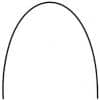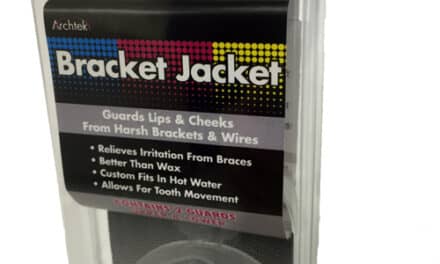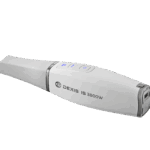Joretta Beanland is the founder and president of New Horizons Software, a developer and provider of orthodontic practice-management software solutions since 1988.
OP: How would you weigh the advantages versus any disadvantages for practices that are considering going paperless?
Beanland: Obviously, there are a number of advantages to paperless. You’ll have increased productivity through faster, easier, simpler access to records and treatment cards—this frees the doctor to see more patients in less time. Another advantage is streamlined payment and accounting processes, including automatic monthly payments that don’t require any stamps, statements, or envelopes—and that allow offices to offer discounts for those who set up auto-withdrawals. You’ll also enjoy improved communication both within the office and between multiple offices and staff members, who can now all access the same information right at their fingertips no matter where they are. That’s just to name a few.
As for disadvantages, I would say that rather than disadvantages, there are considerations that any office should take into account before making a decision to go paperless. Investments in new or updated computer systems and software may be required, as well as a good camera for digital pictures and a top-notch scanner.
Each doctor should be comfortable with how paperless they become. No one needs to be forced into this. An office may choose to take steps toward going paperless versus doing it all at once. In fact, I often recommend this, as it gives staff time to train and adjust to new procedures.
OP: How does an office go about going paperless?
Beanland: First, assess the current situation. Understand the capacities of your current office-management software, systems, and equipment. Make sure can accommodate your paperless diagnosis and treatment needs, including your imaging needs, such as adding and accessing your intraoral pictures and x-rays from the paperless patient chart—as well as administrative tasks and functions.
Once you’ve assessed the situation, put a good, solid backup system into place that will put your mind at ease. Third-party solutions that automatically back up files every night off-site are an excellent solution that let you sleep at night and free you from worrying about equipment failure or depending on staff.
With a good backup system and the proper software, systems, and equipment in place, you have two main choices as to how you “go paperless.”
- Jump in with a total conversion, scanning any and all existing records and charting everything you see. This will require a fast, high-quality scanner and a good amount of time up front from either your staff or from temporary personnel brought on specifically for this purpose.
- Go into it gradually, charting only new patients. The second method takes more time, but may be more practical for most offices given available staff time and learning curves.
OP: What about security and confidentiality?
Beanland: Paperless records are not only legal and valid in courts of law, but actually offer a stronger level of security and confidentiality than traditional paper records. Do check and ensure that your practice-management software offers strong security options. The orthodontist should be able to control each employee’s log-in and access rights, for example. With off-site backups, you not only have time-stamped third-party protection and proof that past data has not been tampered with or accessed without authorization, but also great peace of mind regarding the safety of your data.
OP: How does going paperless impact charting and treatment cards?
Beanland: Both charting and treatment cards are easier to control and access under the paperless approach. Paperless charts and cards also allow for more consistency and free the doctor to see more patients in less time. Depending on the management software, doctors may develop a customized list of treatment items specific to their usual procedures that can be accessed from a menu, as well as being able to manually enter notes as they might on a paper chart. For one example, in an “Upper Wires” column, the wires can be color-coded, so that the doctor can see at a glance how they are progressing.
Yet another advantage offered by paperless charting and treatment cards is improved communication between the front and back office. With both the front and back office having access to the same screen, you can reduce the need for physical “back and forth” and, depending on the office and the back office duties, the paper system supports increased teamwork on issues such as recall status, scheduling subsequent procedures, and generating extraction letters.
OP: What should an orthodontic office look for once a decision has been made to go paperless?
Beanland: From the practice-management perspective, it’s imperative to ensure that the office’s management software has the capacity and flexibility to integrate all aspects of both front and back office functions in a reliable, simple, functional—and, importantly—customizable manner. You want your system to work with the way your office works versus having to change all your procedures to suit your software.
Integration is very important as well. A whiz-bang automatic payment system or online charts won’t offer their full benefits if they aren’t integrated with imaging, scheduling, and treatment cards. You want a system that puts everything at your fingertips. Other aspects to consider are security, solid backup systems and procedures, off-site access capacity, ability to access the system between multiple offices, and the initial additional staff time needed to learn to use new systems as well as convert records either through time or up front.
I’ve yet to hear regret from any orthodontic practice regarding going paperless. Yes, there is an adjustment period during the initial conversion, but the rewards in efficiency, increased productivity, and space and time savings are significant.
For more information, visit www.nhsoftware.com.









